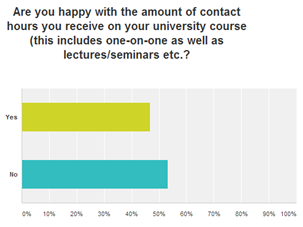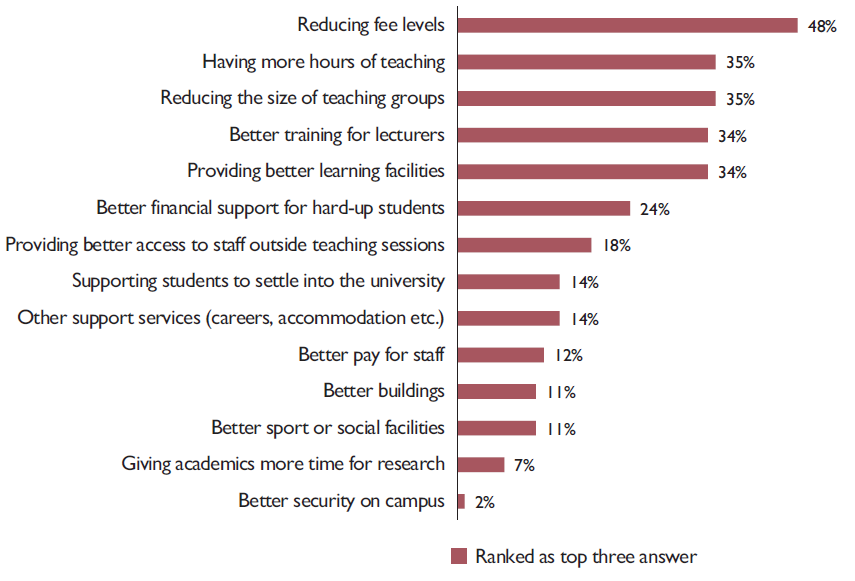07.07.2014
CSD Student Satisfaction Survey 2014
As the professional body for design, the Society provides an accreditation programme that meets the needs of the profession and the industry, encouraging and enabling design education to deliver fit for purpose design learning for the benefit of all involved.
This Spring the Society surveyed the services provided for design students at University. We conducted a number of case studies and qualitative interviews in order to gain an overview of students’ opinions on various aspects of their design education. Their assessments highlighted where there was success and progress being made but also identified some areas of concern that we will be addressing with those in design education under the umbrella of the CSD Course Endorsement Programme (CEP).
Crucial points taken from these interviews pointed towards a lack of contact hours on design courses. Some students documented poor structure within their courses. They also highlighted contact hours and career guidance as areas that they felt required improvement.
“I am very disappointed with the lack of support provided for after University. The tutors did not offer any advice or direction and there was too much focus on assignments and not enough preparation for the future.”
Textile Design Student, London
It was also noted that there was little awareness of the external resources available to students of design, one student said:
“I feel I have missed a lot of opportunities through lack of information from the course tutors”
Fashion Illustration Student, London
Following this research we targeted a wider range of respondents by releasing a multiple choice questionnaire. The survey was conducted across a wide spectrum of design courses in all subjects (Fig 1) in order to gauge students’ satisfaction. We received responses not only from students on CSD Accredited courses, but also from design courses accredited by other bodies and courses with no accreditation.
With the recent increase in fees in 2012 universities have been scrutinised for the value of their courses. Our survey highlighted the fact that more than half of students were not satisfied with the amount of contact hours they received (Fig 2) or with the quality or quantity of career guidance on offer during their education (Fig 3).
When investigating the content on the design curriculum we found a gap in the awareness in respect to designers’ rights, legal matters and in particular intellectual property rights (Fig 4). With the introduction of the Intellectual Property Act 2014 this May, protection for the UK’s design sector has been strengthened. The Society believes that an understanding of intellectual property, at an early stage of a design career, is paramount in understanding the legal issues in their working environment and in monetising their creativity.
The data showed that less than 40% of all design students who participated in the survey had received any guidance on this subject. Of this division we found that 100% of students attending a course from CSD’s Course Endorsement Programme (CEP) had received relevant information on designers’ rights and intellectual property during their education. With the use of the Genetic Matrix to map the criteria of a design course, the CEP ensures key topics such as this are not missed out of the programme of study.
The Times Higher Education Student Experience Survey 2014 polled 14300 students on their satisfaction of 21 features of University life, identified by the students themselves. This year’s top spot was taken by the University of Sheffield, having secured excellent ratings across all areas. The improvements at the University came after an initiative was introduced get the students involved with the decision making process.
The Chartered Society of Designers works alongside universities and formally recognises excellence in both design teaching and study throughout design education within its CEP and currently accredits and recognises 11 design courses in the UK within five universities; of these Nottingham Trent University (NTU) climbed an impressive 18 places from last year, becoming one of the top 40 universities in the UK. According to the Times survey. NTU and Plymouth University achieved above average scores of 20 out of 22 and 15 out of 22 of the considered criteria (respectively). All of the universities within the CSD CEP achieved above average scores for ‘good relationships with teaching staff’, and 75% scored above average for satisfaction of the campus environment, security, and work load.
The Higher Education Policy Institute (HEPI) an independent charity devoted to higher education conducted a further Student Academic Experience Survey in 2014. It revealed details of students’ experiences and wellbeing in English Institutions.
According to the survey more than one third of students believed that their course represented ‘very poor’ or ‘poor’ value for money. When asked their priorities 55% (of 1st and 2nd year students) chose reducing fee levels as their number one priority (48% overall) whilst 35% chose teaching hours and smaller group sizes (Fig 5). The results showed that hours of study can vary by up to 25 hours a week depending on the course, with the average number of contact hours being 14.2 hours, less than three quarters of the 40 hours a week set out in the Quality Assurance Agency Guidelines.
Better training for lecturers was identified as a priority by 34% of respondents and is an area the Society is keen to help support, requiring structured staff CPD as part of its accreditation proposition as well as promoting research active staff. The Society also recommends students to request staff CVs as part of their research into deciding which design course to apply for.
As the professional body for design, the Society provides an accreditation program that meets the needs of the profession and the industry, encouraging, supporting and enabling design education to deliver fit for purpose design learning for the benefit of all those involved. By ensuring that design courses meet this core criteria value is added to the academic qualification and the student experience.
For further details about the CSD CEP please email cep@csd.org.uk
For the full results of the HEPI survey click here. For The Times survey results click here.





